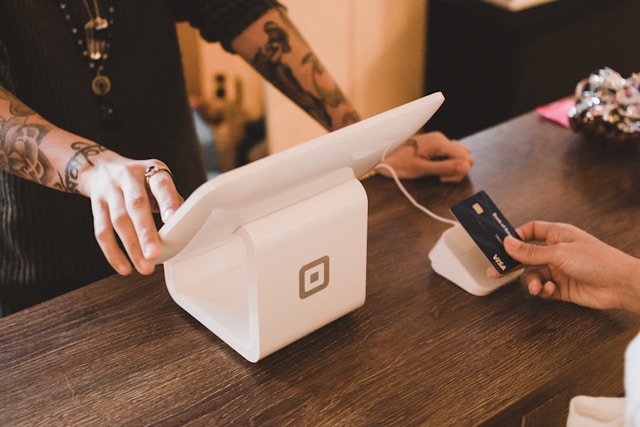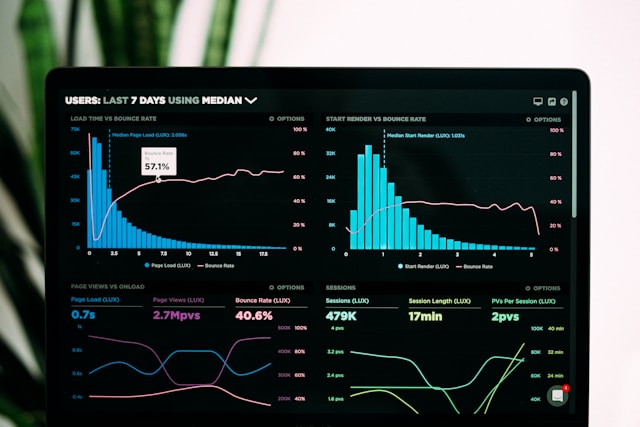Discover the top digital banking and fintech trends in 2026, including AI, blockchain, embedded finance, and hyper-personalized banking, shaping the future of finance.
Introduction
Digital banking can be defined as the use of digital gadgets like mobile apps, websites, and online platforms to provide free banking services. Financial technology, or Fintech, is a concept that is used to denote the application of new software and technology used to enhance financial services, including accelerated funds, bespoke services, and greater accessibility. The two combined are altering how people spend money in the world.
Key features of digital banking include:
- Real-time notification mobile banking apps.
- Online opening and management of accounts.
- Contactless and digital wallets.
- AI-powered customer support
- Third-party financial integration.
Examples of fintech innovations include:
- P2P lending institutions.
- Investment robots.
- Buy now, pay later services.
- Decentralized finance (DeFi) and blockchain-based payments.
- AI-driven credit scoring
Digital banking and fintech create a more responsive and technologically empowered ecosystem through collaboration and the creation of a customer-centric ecosystem.

Why the Combination Matters
In the meantime, by collaborating with conventional banks, fintech firms can obtain more credibility and greater access to the market. Banks use fintech solutions to:
- Streamline operations
- Reduce costs
- Improve customer experience
- Offer new products faster
Best Digital Banking & Fintech Trends to Watch in 2026
1. Embedded Finance
Embedded finance allows payment, lending, or insurance to be accessed in-app within non-financial platforms, allowing financial service providers to integrate their offerings directly into the platform. As of 2026, the trend will render the banking experience more convenient and customer-focused, allowing banking to be more applicable in any industry.
2. AI, Automation & Personalization
The application of artificial intelligence and automation will result in smarter and quicker banking services capable of interpreting customer data to supply personalized financial services, predictive insights, and custom product suggestions, and alter the approach through which users control money and make educated financial decisions.
3. Open Banking
Through open banking mechanisms, the sharing of customer financial data is done securely with third-party providers, leading to innovation in payment solutions, personalised services, and cross-platform financial management. It will more than increase choice and competition in financial services worldwide by 2026.
4. Decentralized Finance (DeFi) & Blockchain
DeFi is a blockchain-based financing system that offers services to financial intermediaries without using middlemen. It allows banks to be lent to, borrowed from, and traded. The number of users of DeFi will grow by 2026, and they will introduce more transparency, access, and opportunities to invest..
5. Central Bank Digital Currencies
The central banks are considering online representations of their national currencies. CBDCs have the goal of enhancing the efficiency of payments, financial inclusion, and the security of transactions. By 2026, digital currency systems and pilot programs will be in operation in several countries.
6. Cybersecurity
Cybersecurity is of the essence as digital banking gains more and more popularity. By 2026, AI will be used to enhance defenses against hacks, fraud, and data breaches, with banks using AI-based threat detection, real-time monitoring, and increased customer authentication to store sensitive financial information.
7. Quantum Computing
It is believed that quantum computing will transform financial modeling, risk assessment, and fraud detection by computing complicated calculations within previously unimaginable time. Fintech companies will venture into practical uses by 2026, and these will change the decision-making and efficiency of the banking systems.
8. Regulatory Technology (RegTech)
RegTech uses technology to be efficient in the enforcement of financial laws. In 2026, banks shall gradually embrace AI and automation in the tracking, reporting, and risk management to lower the regulatory burnt in the effort to ensure transparency and accountability.
9. Blockchain
In addition to cryptocurrencies, blockchain offers secure and transparent, and immutable record-keeping. The year 2026 will witness banks using blockchain in payments, trade finance, and identity checks to enhance confidence, reduce transaction costs, and also streamline complex operations.
10. Buy Now, Pay Later (BNPL)
BNPL enables the consumer to pay using non-interest installment plans. This trend will grow in 2026, with digital platforms providing flexible credit, increasing purchasing power, and transforming the lending and retail experience of traditional lending.
11. Green Fintech
Green fintech is dedicated to greener financial solutions, whether it be the tracking of carbon or investments that are green. FinTech will be encouraging consumers and businesses to make their financial decisions eco-friendly through the promotion of ESG-compliant products by 2026.
12. Banking Hubs
Digital banking centers pull together various financial services. These personal finance all-in-one apps will simplify the process of personal finance by merging payments, investments, loans, and analytics to deliver a single, easy-to-use banking experience by 2026.
13. Biometric Authentication
Biometrics (fingerprint, facial recognition, or voice verification) is going to help achieve the level of security and convenience in 2026. These innovations will assist the banks in reducing fraud and improving quick authentication, and providing a better user experience.
14. Hyper-Personalized Banking
Artificial intelligence and big data are the basis of hyper-personalized banking based on the provision of personalized service. Banks will be able to deliver personalized offers, insights, and financial services in 2026 with the behaviour of real-time customer behaviour, and it will increase engagement, satisfaction, and loyalty.
Key Differences Between Digital Banking and Fintech
| Feature | Digital Banking | Fintech |
| Scope | Digitized traditional banking services | Innovative financial products, often outside traditional banking |
| Innovation | Enhances existing services | Introduces new business models and technologies |
| Regulation | Heavily regulated | Often operates in more flexible regulatory frameworks |
| Accessibility | Usually requires a bank account | Can target unbanked populations |
How Digital Banking and Fintech Work Together
Digital banking and fintech convergence have resulted in the creation of a more interconnected, efficient, and customer-oriented financial ecosystem. Digital banking is improved by Fintech innovations that:
- Enhancement of payment systems for speedy and safe transactions.
- Recommendations and fraud detection: AI can be used to recommend products and services to specific customers and detect fraud.
- Linking financial services by using the open banking API.
- Allowing decentralized finance applications like blockchain-based lending.
This partnership will mean that customers can still access the state-of-the-art financial tools without stepping out of their computers.
Challenges Facing Digital Banking and Fintech
Cybersecurity threats, regulatory compliance stresses, and ensuring the privacy of data are some of the problems associated with digital banking and fintech. There is also a digital divide which restricts access to certain users, and high rates of innovation bring with them stiff competition, such that traditional banks and fintech startups must respond a rapid basis to remain relevant.

FAQs
Are digital banks safe?
Yes. Digital banks are regulated and adhere to security measures such as encryption, biometric authentication, and two-factor authentication to secure the users.
Will digital banking replace traditional banks?
Not entirely. The traditional banks will embrace digital services and still serve customers who still desire face-to-face services. Physical branches are not being fully substituted by digital banking.
Can fintech help small businesses?
Yes. To enable small businesses to operate well, fintech offers them easy access to loans, online payment services, accounting packages, automated payroll, and cash flow management services.
Conclusion
Digital banking and fintech are changing the face of finance by offering faster and safer services, and more personalized services. In the future, AI, blockchain, embedded finance, and green fintech are some of the trends that will provide a smooth, inclusive, and innovative financial ecosystem to both consumers and businesses.





